“It Ends with Us” by Colleen Hoover Essay (Book Review)
It Ends with Us is a novel written by Colleen Hoover, an American writer who mainly writes stories in the young adult fiction and romance genres. The novel depicts the story of Lily Bloom and her complicated romantic life; namely, it connects her history of growing up in an abusive family and her current situation in an abusive relationship with her escape from abuse and eventual salvation. In this context, the book illustrates that preferring personal well-being is ultimately the right choice to make.
Despite an apparent romantic context, the general topic of the book is not romance but a never-ending cycle of domestic violence and abuse that can hide in its shadow. The novel’s intended audience is young adults, which derives from the protagonist’s age, the events and problems she has to face, and, most importantly, a lack of personal experience to deal with them at this particular point in time. Having this in mind, Hoover wrote this novel specifically to draw attention to the matter in the young adult genre. In particular, the book focuses on showcasing a woman’s emotional turmoil and indecisiveness in the face of having to choose between her well-being and feelings for the person she genuinely loves. As the events unfold, the author makes it clear that the former option is necessary in order to break the cycle of misery.
When interviewed regarding the book, Hoover confirmed the connection between the book’s events and her past experience. She commented that writing the novel proved to be a great challenge, as the fact that it is based on her father and mother’s relationships has undoubtedly left its toll. Hoover wanted to show how distorted, both morally and emotionally, domestic abuse can appear in the background of true romantic feelings and love. This way, the decision to put an end to violence becomes the only reasonable alternative.
The author supports her claims with the depth and richness of emotional distress the protagonist experiences throughout the book. It is important to note that Lily was able to find the answer to a dilemma by herself; however, she would have the resolve to stick with the decision only with the other character’s support. First of all, the main contributor to the protagonist’s decision-making is Atlas, Lily’s past romantic interest. It was he who highlighted the flaws and abusive patterns of her relationship with Ryle, the protagonist’s current romantic interest. Apart from that, Atlas treated Lily in a proper way, thus, serving as the source of relationship comparison for Lily to make. As stated in chapter 26, Lily realized the truth in his words and took them into account (Hoover, 2020). Therefore, he fostered Lily’s critical thinking and judgment, helping her to come to the conclusions she sought.
The conclusions drawn by the protagonist are eventually supported by other characters of the novel, namely Lily’s best friend, Alyssa, and Lily’s mother. The former’s perspective is strengthened by the fact of the familial bonds Alyssa has with Ryle. In this context, the fact that in chapter 29 Alyssa advises against staying in a relationship with Ryle despite him being her brother illustrates the weight behind her words (Hoover, 2020). In turn, the latter’s perspective is closely connected with the horror of the long-term endurance of the abuse. In chapter 32, Lily finally finds the resolve to consult with her mother regarding the abuse (Hoover, 2020). This makes the mother share how tolerant she had become toward it as time passed.
At the end of the story, Lily is shown to recover from the stress and the weight of her decision to choose herself over her love. The fact that the protagonist managed to cope with it and regain strength to move forward does not seem illogical or out of line, which speaks for the truth behind the author’s claims. Overall, the book proves to be convincing due to the ease with which the readers can associate themselves with its characters. Character development, motives, and reasoning – all fit into the big picture of the fight against the cursed abuse cycle and, thus, contribute to conveying the intended message. Apart from that, the evidence presented is logically reasonable, emotionally understandable, and relatable. The book’s potential flaws, such as the author’s personal interest and a strict female narration perspective, can be considered strictly subjective. The author’s bias, albeit present, does fit into the book’s framework and message. In turn, the female perspective might make the novel more challenging to read for the male audience; however, it does not make it harder to empathize with the characters and comprehend the novel’s idea.
It Ends with Us is a novel that manages to find the right way to translate a fictional experience into valuable thoughts and considerations. In other words, readers following Lily’s struggles and inability to decide between herself and her feelings can live through it as well, drawing their conclusions based on it. Home abuse is a topic of great importance that should not be regarded lightly. In this context, the author’s decision to aim it at the young audience to protect them from its horrors is correct and reasonably justified.
Hoover, C. (2020). It ends with us . Simon and Schuster.
- Chicago (A-D)
- Chicago (N-B)
IvyPanda. (2024, January 20). "It Ends with Us" by Colleen Hoover. https://ivypanda.com/essays/it-ends-with-us-by-colleen-hoover-book-review-examples/
""It Ends with Us" by Colleen Hoover." IvyPanda , 20 Jan. 2024, ivypanda.com/essays/it-ends-with-us-by-colleen-hoover-book-review-examples/.
IvyPanda . (2024) '"It Ends with Us" by Colleen Hoover'. 20 January.
IvyPanda . 2024. ""It Ends with Us" by Colleen Hoover." January 20, 2024. https://ivypanda.com/essays/it-ends-with-us-by-colleen-hoover-book-review-examples/.
1. IvyPanda . ""It Ends with Us" by Colleen Hoover." January 20, 2024. https://ivypanda.com/essays/it-ends-with-us-by-colleen-hoover-book-review-examples/.
Bibliography
IvyPanda . ""It Ends with Us" by Colleen Hoover." January 20, 2024. https://ivypanda.com/essays/it-ends-with-us-by-colleen-hoover-book-review-examples/.
- Nursing Interventions: Alyssa’s Case
- “It Ends With Us” by Colleen Hoover
- The Phenomenon of Colleen Hoover
- Colleen's Risk Assessment Analysis
- Gilbert Ryle’s Philosophic Basis
- Analysis of A Princess in Theory by Alyssa Cole
- Juvenile Justice Process and Corrections: The Case of Colleen M.
- Juvenile Delinquency: Risk Assessment
- Patient Safety and Effective Care
- Fire Plant Explosion In West
- Henry's Change in Hemingway's A Farewell to Arms
- Vivian Morris in Gilbert’s City of Girls
- "The Killer Angel" by Michael Shaara Review
- Jury Deliberations in "Twelve Angry Men" by Rose Reginald
- Race and Meaning of Home in Toni Morrison's Novel
The Literary Vault
Book Reviews, Recommendations and so much more

Book Review: “It Ends With Us” – Colleen Hoover
December 5, 2023
Lily hasn’t always had it easy, but that’s never stopped her from working hard for the life she wants. She’s come a long way from the small town where she grew up—she graduated from college, moved to Boston, and started her own business. And when she feels a spark with a gorgeous neurosurgeon named Ryle Kincaid, everything in Lily’s life seems too good to be true.
Ryle is assertive, stubborn, maybe even a little arrogant. He’s also sensitive, brilliant, and has a total soft spot for Lily. And the way he looks in scrubs certainly doesn’t hurt. Lily can’t get him out of her head. But Ryle’s complete aversion to relationships is disturbing. Even as Lily finds herself becoming the exception to his “no dating” rule, she can’t help but wonder what made him that way in the first place.
As questions about her new relationship overwhelm her, so do thoughts of Atlas Corrigan—her first love and a link to the past she left behind. He was her kindred spirit, her protector. When Atlas suddenly reappears, everything Lily has built with Ryle is threatened

Book Review: “ It Ends With Us ” – Colleen Hoover (Romance Books By Colleen Hoover)
Discovering “It Ends With Us” by Colleen Hoover on BookTok was like stumbling upon a hidden literary gem. The enthusiastic recommendations and passionate discussions about the book on the platform created an irresistible allure. Intrigued by the fervor surrounding it, I couldn’t resist the temptation and decided to dive into the novel. From the very first page, I was captivated by Hoover’s storytelling prowess. The emotional depth, the raw authenticity of the characters, and the exploration of complex themes resonated with me on a profound level. It was a reading experience that went beyond expectations, leaving me utterly blown away by the power of the narrative and reaffirming the magic of stumbling upon a book that touches the soul in unexpected ways.
In “It Ends With Us” by Colleen Hoover, the story revolves around Lily Bloom, a young woman with a traumatic past who, despite her best efforts to build a new life, finds herself entangled in a tumultuous relationship with neurosurgeon Ryle Kincaid. The narrative unfolds in layers, revealing Lily’s personal struggles, her resilience, and the complex dynamics of her relationship with Ryle. As the plot progresses, the novel addresses heavy themes, particularly domestic violence, shedding light on the impact of such issues on individuals. The story becomes a poignant exploration of love’s complexities, forcing Lily to confront difficult decisions and challenging her understanding of what it means to truly stand up for oneself. With unexpected twists and emotional depth, the novel takes readers on a journey that goes beyond the conventional boundaries of romance, offering a profound exploration of human resilience, personal growth, and the intricacies of love.
In “It Ends with Us,” Colleen Hoover skillfully crafts a narrative that stands out for its emotional depth. The novel delves into the intricacies of love, handling challenging subjects with a rare sensitivity and nuanced approach. One of the highlights is the significant character development, especially that of Lily Bloom, whose growth adds layers of complexity to the unfolding story. Hoover masterfully explores various types of relationships, offering a realistic portrayal of their challenges and nuances. The engaging writing style further enhances the reading experience, with Hoover’s prose drawing readers into the narrative effortlessly. The book also addresses thought-provoking themes, such as domestic violence and personal strength, prompting readers to reflect on their own beliefs and values. Amidst all these elements, the well-paced plot emerges as a page-turner, seamlessly blending romance and personal struggles to create a compelling and unforgettable tale that captivates readers from beginning to end.
The novel grapples with weighty themes that could be distressing for certain readers, particularly due to its intense depiction of domestic violence. For those seeking a lighter reading experience, the emotional challenges presented in the narrative might prove overwhelming. While the story is undeniably engaging, some readers may find certain plot twists predictable. However, the true strength of the novel lies more in the profound emotional journey it unfolds rather than in surprising twists. The impact of the story is highly subjective, varying based on individual experiences and perspectives. Some readers may deeply resonate with the themes, connecting on a personal level, while others may find them too intense or triggering. Additionally, for those inclined towards a more traditional or lighter romance, the novel’s emphasis on emotional exploration may overshadow the romantic elements, potentially influencing their overall reading experience.
Book Review and Rating:
In conclusion, “It Ends with Us” stands out as a powerful exploration of love and personal strength. Its emotional depth and realistic portrayal of relationships contribute to a captivating narrative. While some may find the themes intense, the novel’s thought-provoking nature and engaging writing make it a worthwhile read for those seeking a contemporary romance with substance.
If you enjoyed reading this book review, please like, comment, follow, and share. Subscribe to my newsletter to stay tuned for more book review s and Young Adult Book Recommendations .

Leave a Reply Cancel reply
Your email address will not be published. Required fields are marked *
Save my name, email, and website in this browser for the next time I comment.
A Reader Lives a Thousand Lives Before He Dies. The Man Who Never Reads Lives Only One.
What am i currently reading.

As Featured In

So Many Books So Little Time
Get the next review straight to your mailbox.

Copyright © 2024 The Literary Vault
It Ends with Us Review (2016): Unveiling the Irresistible Impact
- Emma Thompson
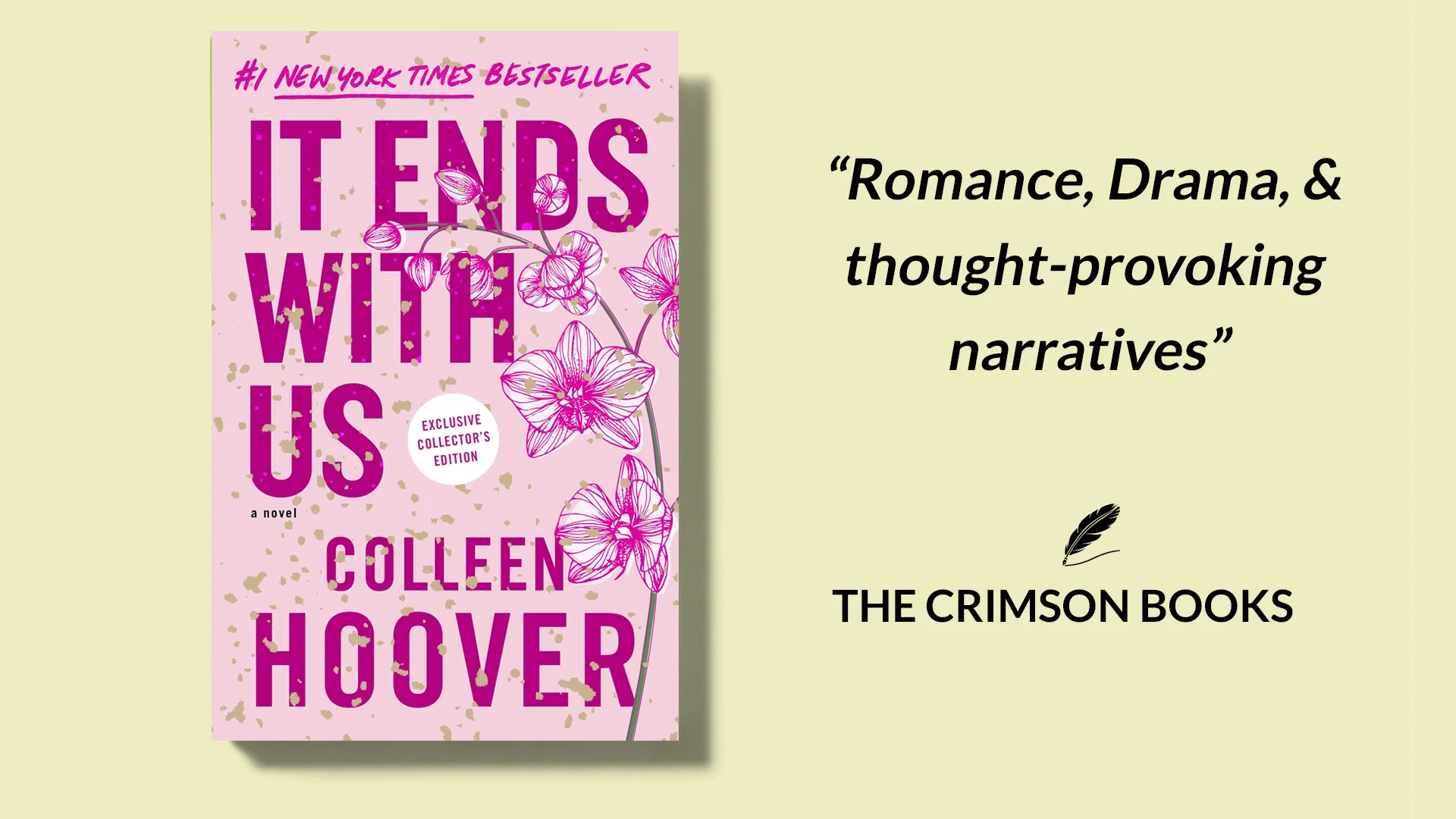
In this comprehensive ‘It Ends with Us’ review, we delve into the enthralling narrative crafted by Colleen Hoover. Join us as we explore the emotional depth, thought-provoking themes, and the profound impact of this remarkable novel.
‘It Ends with Us’ by Colleen Hoover has taken the literary world by storm with its poignant story and unforgettable characters. In this review, we uncover the reasons behind its widespread acclaim and its ability to resonate with readers worldwide.
One of the most striking aspects of ‘It Ends with Us’ is its ability to address sensitive topics with compassion and authenticity. Colleen Hoover masterfully navigates themes of love, loss, and personal growth, leaving readers with a profound understanding of the complexities of human relationships.

The characters in ‘It Ends with Us’ are richly developed, each with their own unique struggles and vulnerabilities. Through the protagonist’s journey, Hoover presents a thought-provoking exploration of the intricacies of domestic abuse and its impact on individuals and families.
Hoover’s writing style is both eloquent and captivating, drawing readers into the story from the very first page. The narrative unfolds with a perfect balance of heart-wrenching moments and hopeful glimpses, keeping readers emotionally invested until the very end.
‘It Ends with Us’ is not just a novel; it is a call to action. By shedding light on important social issues, Hoover encourages readers to reflect on their own lives and make a positive change. This thought-provoking book has the power to spark conversations and inspire empathy, making it a must-read for anyone seeking a transformative reading experience.
In conclusion, ‘It Ends with Us’ is a gripping and emotionally-charged novel that leaves a lasting impact on its readers. Colleen Hoover’s powerful storytelling and exploration of complex themes make it a standout work in contemporary fiction.
Whether you’re a fan of romance, drama, or thought-provoking narratives, this book is sure to captivate and resonate with you long after the final page.
It Ends with Us Buying Options:
Disclaimer: This blog post may contain affiliate links. If you click on these links and make a purchase, The Crimson Books may earn a small commission at no additional cost to you.
About the Author

Emma Thompson is a passionate bookworm with a deep appreciation for literature across various genres. With a degree in English Literature, she has a keen eye for analyzing and dissecting the intricacies of a book’s themes and writing style.
Emma has been an active reviewer for over five years, sharing her insights and recommendations with fellow readers.
Related Posts
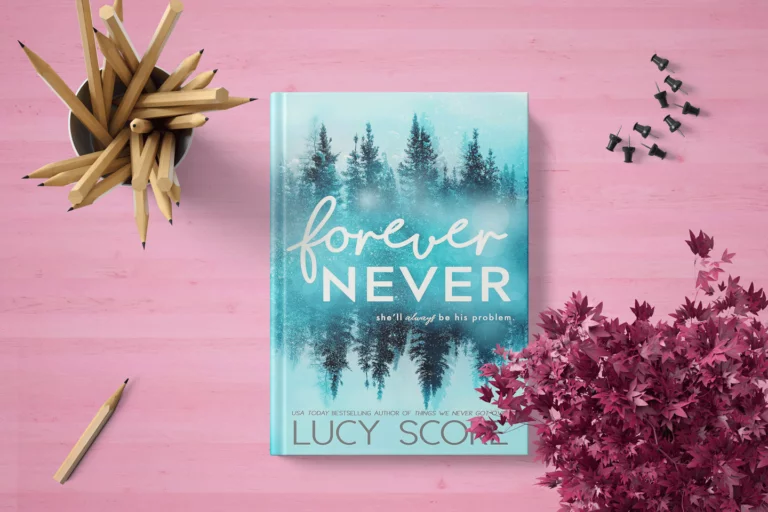
Forever Never by Lucy Score
- Book Reviews
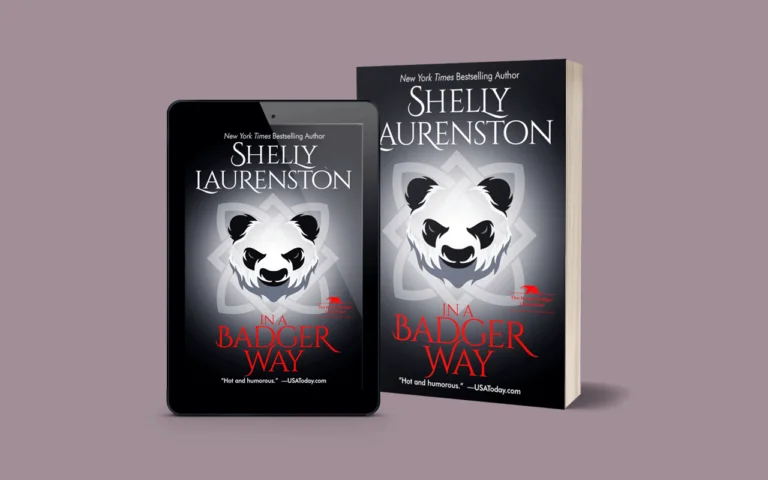
In a Badger Way (The Honey Badger Chronicles Book # 2)
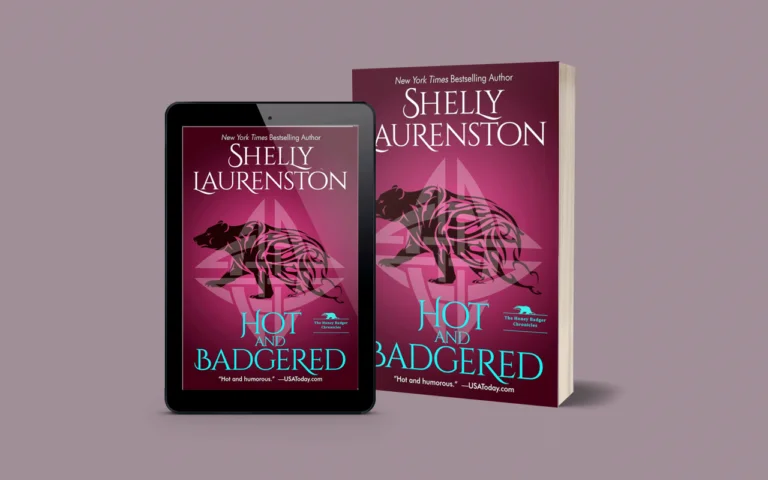
Hot and Badgered (The Honey Badger Chronicles Book # 1)
Leave a reply cancel reply.
Your email address will not be published. Required fields are marked *
Name *
Email *
Add Comment *
Save my name, email, and website in this browser for the next time I comment.
Post Comment

It Ends with Us
Colleen hoover, ask litcharts ai: the answer to your questions.
Lily has recently moved to Boston after finishing her master’s degree in business. At this point in her life, Lily is caught somewhere between the past and the future. The opening scene finds her on a rooftop deck contemplating the eulogy she delivered earlier that day for her father ’s funeral. It bothers her that she still feels overwhelming rage at her father, who was beloved by his community but abused Lily’s mother behind closed doors. Lily is also still angry at herself and her mother for keeping the domestic violence a secret.
In the midst of wrestling with these complexities, Lily meets Ryle Kincaid , a neurosurgery resident who has also come to the rooftop to work through his anger. They are immediately at ease with each other, exchanging “naked truths” about themselves and sharing their deepest thoughts. Ryle explains that he wants to be the best surgeon in his field, and Lily tells Ryle that she longs to quit her job in marketing and open her own floral shop. Ryle tells Lily he wants to have sex with her. Though Lily finds Ryle very attractive, she explains that she doesn’t have one-night stands with strangers. Ryle gets a call from the hospital and has to leave abruptly.
Six months later, Lily brings her mother to the storefront space she purchased with her inheritance money to open her shop. Later that day, Lily hires Allysa , whose enthusiasm, determination, and vision for the space win Lily over. They become fast friends. When Lily accidentally sprains her ankle in the process setting up shop, Allysa calls her brother and her husband, Marshall, who’ve been watching football at a nearby bar, for help. When the men arrive, Lily realizes that Allysa’s brother is Ryle, the man she met on the roof.
After reconnecting at the floral shop, Lily and Ryle continue to run into each other, though they attempt to ignore their attraction to each other because of their conflicting long-term goals. With every meeting, however, their sexual tension grows. Lily tries to distract herself by reading entries from her childhood diaries, which she addressed to her hero, Ellen DeGeneres . In so doing, Lily relives parts of her childhood she hasn’t thought of in many years, like specific episodes of her father’s abuse. Reading her diaries also reminds Lily of her classmate, Atlas Corrigan , whom she befriended after noticing him living in the abandoned house across the ally from Lily’s childhood home.
In the present, Lily and Ryle decide to give dating a chance despite their reservations. Ryle is amazed by Lily’s supportiveness of his career, finding that a loving relationship adds to rather than detracts from his goals. In return, Lily finds Ryle’s devotion a blissful complement to the escalating success of her business. They become enmeshed in each other’s lives. Ryle wants to meet Lily’s mother, so the three of them have lunch at a new restaurant in Boston, Bib’s. While Ryle and Lily’s mom hit it off, Lily is distracted when she recognizes their waiter as Atlas, her childhood friend. Lily lingers after her mother and Ryle leave the restaurant, and she and Atlas catch up for the first time in nine years. Lily tells him about her business and relationship with Ryle, and Atlas tells her about his time in the military and his girlfriend, Cassie . Though Lily feels a pang of jealousy when Atlas mentions his girlfriend, she leaves the conversation feeling like she finally has some clarity on their relationship and is eager to move forward.
Still, Lily continues to reread her old journals. The entries recount how her feelings for Atlas continued to grow. Together, they endured their traumas and made plans for a happy future together in Boston. One evening, Atlas gave Lily an open heart he’d carved from the tree between their homes as a symbol of their connection and his feelings for her. Their blossoming love was derailed, however, when Atlas’s uncle in Boston offered him a home—something Atlas couldn’t turn down, though it meant he had to leave Lily behind in Maine.
Back in present-day Boston, Ryle and Lily’s relationship continues to flourish—until it doesn’t. They’re sharing a bottle of wine one evening when Ryle accidentally burns his hand while grabbing dinner out of the oven. Lily’s shocked laughter angers Ryle, and he pushes her into a cabinet. When he apologizes, all Lily can hear is the echo of all her father’s apologies after hurting her mother. The episode forces Lily to re-evaluate her relationship with Ryle, and while she is horrified by his behavior, she believes he is different from her father and decides not to punish him for her father’s sins. Lily forgives Ryle, but she warns him that she will leave if he hurts her again.
The next day, Lily and Ryle meet Allysa and Marshall at Bib’s. They run into Atlas, as Lily feared they would, and when he sees Lily’s injury and the bandage on Ryle’s hand, he automatically assumes—correctly—that Ryle hurt her. Atlas follows Lily to the bathroom to check on her, and a fight nearly breaks out when Ryle finds them leaving the restroom together. After they leave Bib’s, Lily explains her history with Atlas. Ryle worries that she is cheating on him, but she reassures him Atlas is only a concerned friend. The next day, Atlas visits Lily at her work and gives her his phone number, which he hides behind her phone’s battery. He tells her to call him if she ever needs him one day. Later, Lily returns home to read the last entry in her journal, which recounts the night Atlas came back from Boston to visit Lily for her birthday. He explained to her on that night how she had saved his life. Atlas promised to come find her once he improved his life enough to deserve having her in it; he gave her a Boston magnet as a symbol of that promise.
Ryle and Lily decide to fly to Las Vegas and get married. The beginning of their marriage is happy and carefree, much like their dating life, until one evening when Ryle finds Atlas’s phone number in Lily’s phone. Lily wakes from another violent incident with several cuts on her face and a concussion. Unlike the last time Ryle hurt her, Lily does not cover for him after this incident. When Allysa finds out about the abuse, she supports Lily’s decision to leave Ryle, but she begs Ryle to tell Lily about their brother. Lily learns that Ryle accidentally shot and killed his brother, Emerson , as a kid. This trauma has been a key driver of his passion for medicine, his fear of love, and his manic, rage-filled episodes. In light of this new information and Ryle’s promise to do better, the couple reconciles.
Another stretch of undisturbed happiness follows. Ryle buys Lily an apartment in the same building as Allysa, who is pregnant, and they all excitedly await the arrival of Allysa and Marshall’s baby to arrive. On the day Allysa goes into labor, Ryle wins a two-month fellowship in Europe, and the local paper lists Lily’s flower shop as one of the best new businesses in Boston. Lily and Ryle are in awe of their new niece and decide to start trying for their own baby.
But one night, Lily arrives home to find Ryle drunk and angry. Ryle explains that he read the newspaper story about Boston’s best new businesses more closely and found that Atlas’s restaurant is featured in it. In Atlas’s interview, he explains that the name stands for “Better in Boston”—just like Lily’s magnet. Ryle then decides to go through Lily’s things and finds the carved heart, which is identical to the tattoo on Lily’s shoulder. Reading Lily’s journals further convince Ryle that Lily is harboring secret feelings for Atlas. Ryle’s most violent episodes follows. When Lily struggles, he headbutts her, rendering her unconscious. In an effort to deescalate the situation, Lily agrees to forgive a remorseful Ryle. Once he falls asleep, she escapes.
Lily calls Atlas, who takes her to the hospital. There, she finds out she is pregnant with Ryle’s baby. While Lily decides what to do, Atlas lets her sleep in his guest room. The next day, Ryle tells her that he is going to Europe for his fellowship, giving her space for the next two months. He doesn’t know about the pregnancy. Lily finds sanctuary with Atlas at first, though she is worried about what his girlfriend will think. Then, when his friends come over for a poker game, Lily discovers that Atlas made up Cassie. When Lily confronts Atlas about the lie, he tells her that he didn’t want her to feel bad for him ending up alone or guilty for never coming back to him. Lily then asks Atlas why he didn’t keep his promise of finding her. He admits he did come for her in college, but he saw that she was dating someone else. They agree that their feelings for each other and Lily’s current situation with Ryle make things too complicated, so Lily goes back to her empty apartment. Before she leaves, Atlas tells her that if she is ever willing to fall in love again, he will be waiting.
Back home, Lily finally tells Allysa what Ryle did to her, and she also shares the news of her pregnancy. Shortly after, Ryle comes home early to try to work things out with Lily. Marshall agrees to serve as a moderator and protector while they talk. Lily is visibly pregnant when Ryle sees her. Ryle begs her to let him come home so they can raise the baby together. She tells him to leave and admits she wishes the baby wasn’t his. Lily then fills her mother in about the abuse and the baby; she also admits that she still loves Ryle. Lily’s mom expresses how proud she is of Lily for leaving. She tells Lily that if Ryle really loved her like he says he does, he wouldn’t let Lily take him back.
As Lily’s pregnancy progresses, she and Ryle form a tentative truce. Lily lets him help her out in small ways at first, and eventually she is comfortable enough to let him stay in the apartment in case of emergencies. When their daughter is born, Ryle is by her side. Lily suggests that they name her Emerson— Emmy —in honor of Ryle’s late brother. Ryle is overcome with love. When he asks Lily for an answer about the future of their marriage, Lily asks him what he would do if Emmy told him that her boyfriend hit her. Ryle, understanding the point of Lily’s question, is devastated but supportive when Lily asks for a divorce. Lily hopes that this decision has broken the cycle of abuse she and her mother endured, ensuring Emmy will never suffer the way they did.
Nearly a year later, the epilogue finds Lily rushing down the street with Emmy to drop her off with Ryle. On her way, she runs into Atlas. Lily introduces him to her daughter, then they part ways. After Lily meets up with Ryle and says goodbye to Emmy, she runs back the way she came and catches up with Atlas. She tells him she’s ready to be with him. They kiss, and Lily feels as if her struggle to survive is over.


"It Ends with Us" Summary
By Colleen Hoover
romance | 385 pages | Published in 2016
Sometimes it is the one who loves you who hurts you the most.Lily hasn’t always had it easy, but that’s never stopped her from working hard for the life she wants. She’s come a long way from the small town in Maine where she grew up — she graduated from college, moved to Boston, and started her own business. So when she feels a spark with a gorgeous neurosurgeon named Ryle Kincaid, everything in Lily’s life suddenly seems almost too good to be true.Ryle is assertive, stubborn, maybe even a little arrogant. He’s also sensitive, brilliant, and has a total soft spot for Lily. And the way he looks in scrubs certainly doesn’t hurt. Lily can’t get him out of her head. But Ryle’s complete aversion to relationships is disturbing. Even as Lily finds herself becoming the exception to his “no dating” rule, she can’t help but wonder what made him that way in the first place.As questions about her new relationship overwhelm her, so do thoughts of Atlas Corrigan — her first love and a link to the past she left behind. He was her kindred spirit, her protector. When Atlas suddenly reappears, everything Lily has built with Ryle is threatened.
Estimated read time: 4 min read
One Sentence Summary
A young woman finds herself in a complicated relationship and must confront her past to secure her future.
Table of Contents
Introduction, brief synopsis, main events, main characters, themes and insights, reader's takeaway.
"It Ends with Us" is a powerful and emotionally charged novel written by Colleen Hoover. This New York Times bestseller takes readers on a compelling journey that delves into the complexities of love, life, and the choices we make. With its raw and poignant narrative, the book explores themes of resilience, empowerment, and the enduring strength of the human spirit.
The story is set in Boston, where the protagonist, Lily Bloom, is striving to build a successful career and move on from a difficult past. She meets the charming and enigmatic neurosurgeon Ryle Kincaid, and the two embark on a passionate and tumultuous relationship. However, Lily's world is turned upside down when she is unexpectedly reunited with her first love, Atlas Corrigan, bringing to the surface long-buried emotions and painful memories. As she confronts the complexities of her feelings for both men, Lily is forced to make difficult choices that will ultimately shape her future.
Lily is a resilient and determined young woman who strives to overcome a difficult past and build a successful life for herself. She is compassionate and fiercely independent, but also grapples with the complexities of love and relationships.
Ryle Kincaid
Ryle is a charismatic and accomplished neurosurgeon who enters Lily's life, bringing passion and intensity to their relationship. However, his inner struggles and volatile nature pose challenges for their connection.
Atlas Corrigan
Atlas is Lily's first love, and their reconnection brings forth unresolved emotions and a deep sense of longing. He represents a pivotal figure from Lily's past, sparking introspection and difficult choices.
Resilience and Empowerment
The novel delves into the theme of resilience, highlighting Lily's unwavering strength in the face of adversity. Her journey towards empowerment serves as a central narrative, resonating with readers who have experienced their own struggles and triumphs.
Complexities of Love
Through the intricate relationships between Lily, Ryle, and Atlas, the novel explores the multifaceted nature of love. It delves into the blurred lines between passion and pain, and the enduring impact of past connections on present choices.
Personal Growth and Self-Discovery
Lily's introspective journey prompts readers to contemplate the complexities of personal growth and self-discovery. The novel encourages reflection on the choices we make, and the profound impact they have on shaping our identities and relationships.
"It Ends with Us" offers readers a poignant and thought-provoking exploration of love, resilience, and the complexities of human emotions. The narrative's emotional depth and compelling characters resonate with audiences, sparking introspection and empathy. This gripping novel leaves a lasting impression, prompting readers to contemplate the enduring strength of the human spirit and the transformative power of personal choices.
In "It Ends with Us," Colleen Hoover delivers a captivating and emotionally charged narrative that delves into the complexities of love, resilience, and the enduring impact of our choices. Through its compelling characters and thought-provoking themes, the novel offers a deeply resonant exploration of personal growth, empowerment, and the enduring strength of the human spirit. With its raw and poignant storytelling, "It Ends with Us" leaves a lasting impression on readers, prompting reflection and empathy long after the final page.
It Ends with Us FAQ
What is 'it ends with us' about.
It Ends with Us is a powerful and emotional novel that follows the story of Lily Bloom as she navigates a complicated relationship with Ryle Kincaid, a neurosurgeon, while also dealing with the emotional and physical legacy of her father's abuse.
Who is the author of 'It Ends with Us'?
The author of 'It Ends with Us' is Colleen Hoover, a bestselling author known for her compelling and heartfelt contemporary romance novels.
Is 'It Ends with Us' a standalone novel or part of a series?
It Ends with Us is a standalone novel and does not belong to any series.
What themes are explored in 'It Ends with Us'?
The novel explores themes of love, resilience, domestic abuse, and the complexities of human relationships.
Is 'It Ends with Us' suitable for young adult readers?
While 'It Ends with Us' deals with mature themes and contains content that may not be suitable for younger readers, it is a compelling and important read for mature young adults and adults alike.
Books like It Ends with Us

Middlemarch
By George Eliot

Wuthering Heights
By Emily Brontë

Anna Karenina
By Leo Tolstoy
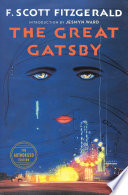
The Great Gatsby
By F. Scott Fitzgerald
Home — Guides — It Ends with Us — Introduction to ‘It Ends with Us
by Colleen Hoover
- Introduction
- All Plot summary
- Full Book Summary
- Plot Summary by Chapters
- All Characters
- Atlas Corrigan
- Ryle Kincaid
- Jenny Bloom
- Andrew Bloom
- Ellen DeGeneres
- Personal Strength
- All Literary Devices
- All Infographics
- Character Map
- Biography of author
It Ends with Us: Introduction

It Ends with Us is a contemporary romance novel written by Colleen Hoover and published in 2016. The novel explores themes of domestic abuse, family dynamics, and self-discovery.
The story is narrated by Lily Bloom, a young woman who has moved from her small town to Boston to start her own business. There, she meets Ryle Kincaid, a successful neurosurgeon, and they begin a whirlwind romance. However, Lily's first love, Atlas Corrigan, reappears in her life and stirs up old feelings.
As Lily navigates her complicated love life, she also grapples with the memory of her father, who was abusive to her mother. Through a series of flashbacks, Lily reveals the traumatic events of her childhood and how they continue to impact her relationships.
The novel explores the complex dynamics of abusive relationships and the difficulty of breaking the cycle. It also highlights the importance of self-love and empowerment in overcoming difficult circumstances.
One of the strengths of the novel is its nuanced portrayal of the characters. Lily is a relatable protagonist who struggles with conflicting emotions and difficult choices. Ryle is initially presented as a charming and successful partner, but his flaws and violent tendencies are gradually revealed. Atlas, meanwhile, is a sympathetic figure who represents Lily's past and her unresolved feelings.
The novel also delves into the themes of forgiveness and second chances. Lily's journey towards self-discovery and healing is a powerful and emotional one, as she learns to confront her past and make difficult choices for her own well-being.
Overall, It Ends with Us is a poignant and thought-provoking novel that tackles important issues with sensitivity and honesty. Its exploration of the complexities of love and abuse is both heart-wrenching and empowering, and its message of self-love and empowerment is both timely and inspiring. It is a must-read for anyone who has experienced or witnessed abuse, as well as for anyone seeking to better understand the dynamics of abusive relationships.
Our writers will help you with any type of work on the topic of "It Ends with Us"


Dive Deeper into It Ends with Us
Free essay examples database
Questions & Answers
Recommended for You

by Charlotte Perkins Gilman

by Tim O'Brien
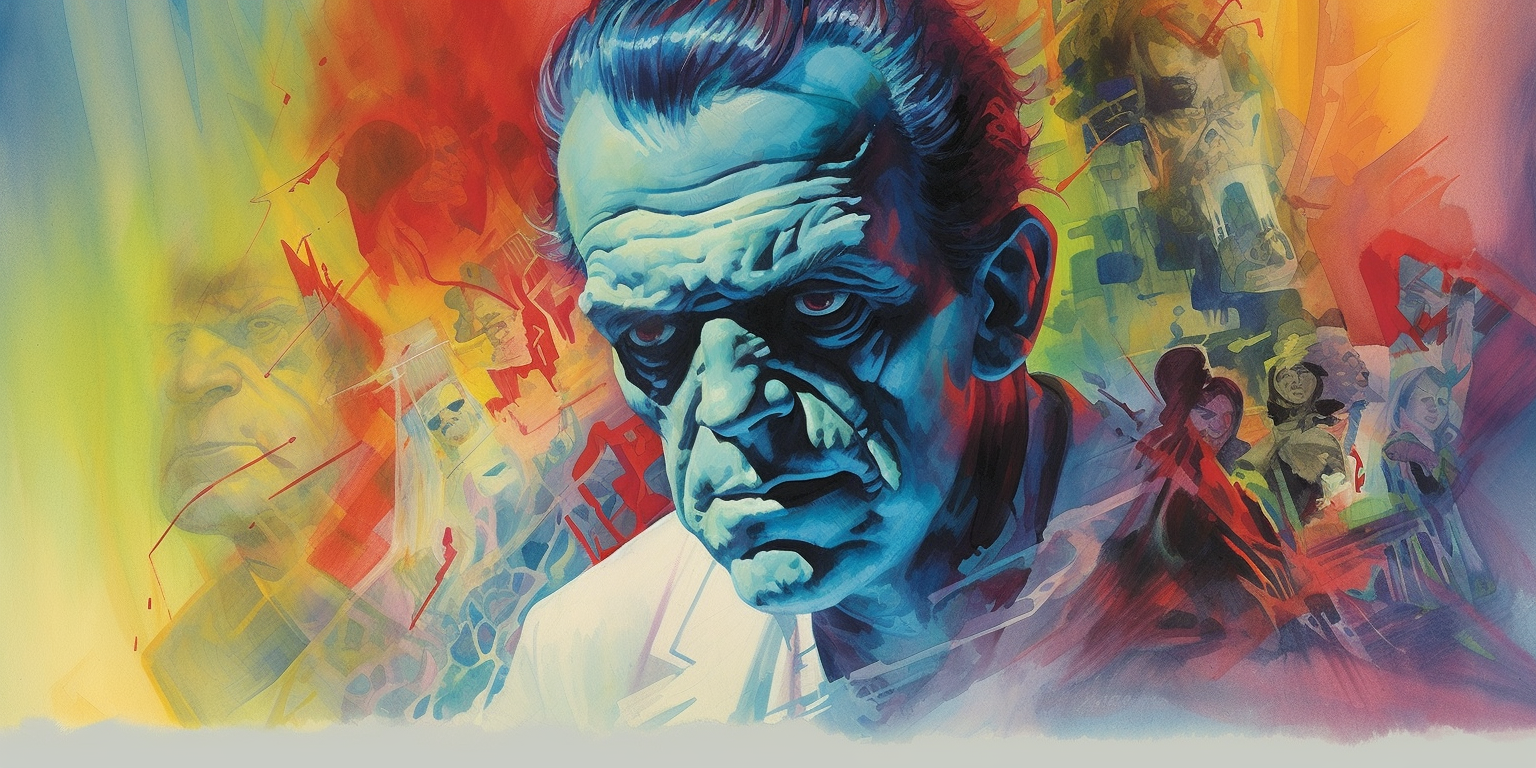
by Mary Shelley
We use cookies to personalyze your web-site experience. By continuing we’ll assume you board with our cookie policy .
- Instructions Followed To The Letter
- Deadlines Met At Every Stage
- Unique And Plagiarism Free

Book Review: It Ends With Us by Colleen Hoover
By Yasi Agah Posted on 9.9.21
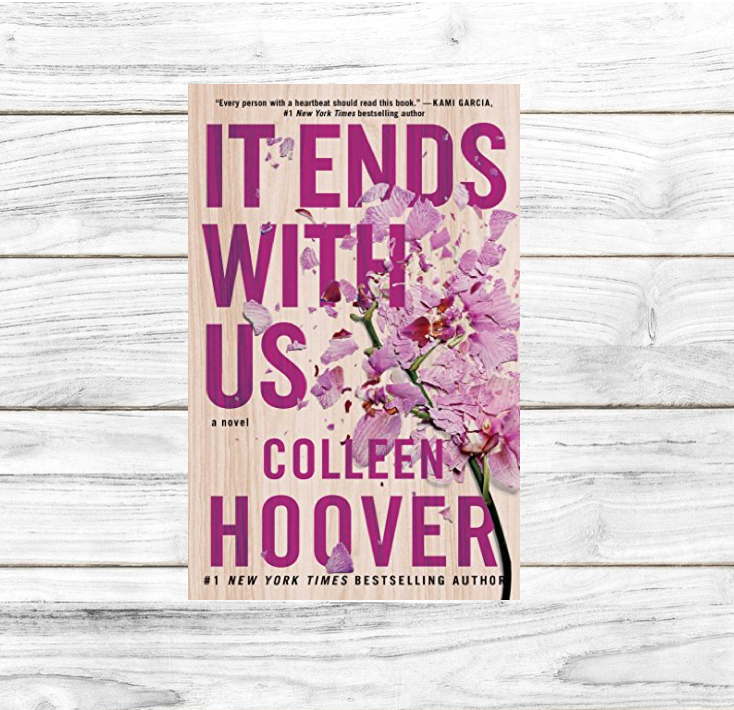
CW: domestic abuse
Have you ever witnessed your friend or family member in a toxic relationship? Have you yourself ever been in a toxic relationship? To an outside perspective it seems impossible why anyone would ever stay in an unhealthy relationship. But to the person inside the relationship…it’s not that easy. In this story, Lily Bloom (yes, that is her adorable name) is a free-spirited Maine native with a seemingly normal life…until she meets Ryle.
After she graduates with a business degree from college, she moves to Boston and decides that she wants to pursue her dream of opening a flower shop (Yes. You read that correctly. Again – adorable). When she moves to Boston she meets a mysterious man, Ryle Kincaid, a smooth-talking neurosurgeon with a sprinkle of mystery. Lily and Ryle hit it off with a flirtatious rooftop encounter and have an immediate connection – Lily thinks that she’ll never see him again but she has no idea what’s in store. Ryle turns out to be the love of her life and she can see a future with him. However, a wrench gets thrown into her life when a past flame and her first true love, Atlas, comes back into her life. On the outside, Lily’s life seems amazing. She has a beautiful doctor boyfriend, has an incredible career and is living out her dreams. But on the inside, there’s much more to the story. Check out Colleen Hoover’s thrilling romance novel, It Ends With Us , for a story about how love doesn’t always turn out the way you think.
AH. This book had me on the edge of my seat the entireee time. It was a rollercoaster of emotions, going back and forth between the men in Lily’s life and constantly thinking – why doesn’t she leave if she isn’t happy? I won’t give away any spoilers but there is a heavy theme of domestic abuse throughout this book and helps show the internal debate that women have when they’re in a toxic relationship. It’s extremely easy to see someone in an abusive relationship and think “why doesn’t she leave already?” but it’s truly not that simple.
Based on true events from the author’s life, this book outlines the terrifying cycle of domestic abuse and the effects it can have on women for generations to come. It Ends With Us is an eye-opening and suspenseful story that shows how all consuming and catastrophic domestic abuse can become. This book showed me the insider’s perspective to a terrifying situation and the rationale that women use to stay in unhealthy relationships – it is never as easy as it seems. There were many moments throughout this book that left me teary eyed and I wouldn’t be surprised if it did the same for you. It’s a binge read that somehow breaks your heart and then puts it back together. If you know someone who has experienced domestic abuse and needs help, please check out the resources at the National Domestic Violence Hotline. Here is their website https://www.thehotline.org/get-help/ and you can call 800.799.SAFE (7233).
Leave a Comment Cancel Reply
Your email address will not be published. Required fields are marked *
Get the Latest on IG
Follow us on instagram @yourfeministbookclub

Get into the loop
Want to get a heads up on the book of the month before anyone else? Want to be on the VIP list for special offers and deals? Well, get on the list and you’ll be officially in the FBC loop!
Website by FirstTracks
It Ends With Us Literary Elements
By colleen hoover.
These notes were contributed by members of the GradeSaver community. We are thankful for their contributions and encourage you to make your own.
Written by Allan Porree
Setting and Context
Set in present-day Boston
Narrator and Point of View
The novel is written in the third-person limited point of view. The narrator follows the main character, Lily, as she navigates through life and relationships.
Tone and Mood
The tone of the novel is both emotionally charged and emotionally intense. The mood of the novel is bittersweet, as it deals with themes of love, abuse, and healing.
Protagonist and Antagonist
Protagonist: Lily Bloom Antagonist: Ryle Kincaid
Major Conflict
The main conflict is the protagonist’s struggle to make sense of her abusive relationship with her husband Ryle. She is faced with the difficult decision of leaving him and facing her guilt or staying with him and enduring further abuse. This internal conflict is further complicated by Lily's past experiences with her father's domestic abuse of her mother and her current relationship with her new love, Atlas.
The climax occurs when Lily finally confronts Ryle and admits to herself that she doesn't love him. She breaks free from his control and reclaims her power.
Foreshadowing
The reader is made aware of the protagonist's complicated relationship with her father, which hints at the eventual heartbreaking climax. There are also moments of foreshadowing when the protagonist meets her future husband, as the reader is aware that their relationship will eventually end in disaster.
Understatement
The protagonist, Lily, often uses understatement to express her feelings of sorrow, pain, and confusion. For example, when Lily's father dies, she understates how she expresses her sadness. This understatement serves to emphasize her deep grief and shows her quiet strength.
“I addressed each of my entries to Ellen DeGeneres because I began watching her show the first day it aired in 2003 when I was just a little girl. I watched it every day after school and was convinced Ellen would love me if she got to know me.”
“My eyes are drawn to the warm, neutral colors painted on the walls and the almost full-sized tree in the middle of the restaurant. It looks like it’s growing straight out of the floor, almost as if the entire restaurant was designed around the tree.”
Throughout the novel, the protagonist, Lily, experiences both the positive and negative effects of love. She realizes that love can be both a source of strength and a source of pain. This idea of love being both good and bad is a paradox that is explored throughout the novel.
Parallelism
Throughout the novel, Lily’s current relationship with Ryle echoes her past relationship with her abusive father. Both men are possessive and controlling, and both do not respect Lily’s boundaries and personal space. By paralleling the two relationships, the author highlights the cycle of abuse and how it can be repeated in different relationships.
Metonymy and Synecdoche
Metonymy: The phrase “one-night stand” is used as a metonym for casual relationships.
Synecdoche: The phrase “Holy Grail” is used as a synecdoche for a long-term, committed relationship.
Personification
“My words knock the breath from him”
Update this section!
You can help us out by revising, improving and updating this section.
After you claim a section you’ll have 24 hours to send in a draft. An editor will review the submission and either publish your submission or provide feedback.

It Ends With Us Questions and Answers
The Question and Answer section for It Ends With Us is a great resource to ask questions, find answers, and discuss the novel.
Study Guide for It Ends With Us
It Ends With Us study guide contains a biography of Colleen Hoover, literature essays, quiz questions, major themes, characters, and a full summary and analysis.
- About It Ends With Us
- It Ends With Us Summary
- Character List
It Ends With Us

64 pages • 2 hours read
A modern alternative to SparkNotes and CliffsNotes, SuperSummary offers high-quality Study Guides with detailed chapter summaries and analysis of major themes, characters, and more. For select classroom titles, we also provide Teaching Guides with discussion and quiz questions to prompt student engagement.
Chapter Summaries & Analyses
Chapters 1-4
Chapters 5-8
Chapters 9-12
Chapters 13-16
Chapters 17-20
Chapters 21-24
Chapters 25-28
Chapters 29-32
Chapter 32-Epilogue
Character Analysis
Symbols & Motifs
Important Quotes
Essay Topics
Part of It Ends With Us unfolds through Lily’s entries, which are presented for the reader. What is the effect of framing Lily’s past in this way?
What is the role of Lily’s body in It Ends With Us ? How do Atlas and Ryle physically relate to Lily?
In what ways does the novel subvert traditional tropes of the romance genre?

Don't Miss Out!
Access Study Guide Now
Related Titles
By Colleen Hoover

All Your Perfects
Colleen Hoover

Heart Bones

It Starts with Us

Losing Hope

Maybe Someday

Never Never
Colleen Hoover, Tarryn Fisher

Regretting You

Reminders of Him

Without Merit
Featured Collections
View Collection
Valentine's Day Reads: The Theme of Love
So much is at stake in writing a conclusion. This is, after all, your last chance to persuade your readers to your point of view, to impress yourself upon them as a writer and thinker. And the impression you create in your conclusion will shape the impression that stays with your readers after they've finished the essay.
The end of an essay should therefore convey a sense of completeness and closure as well as a sense of the lingering possibilities of the topic, its larger meaning, its implications: the final paragraph should close the discussion without closing it off.
To establish a sense of closure, you might do one or more of the following:
- Conclude by linking the last paragraph to the first, perhaps by reiterating a word or phrase you used at the beginning.
- Conclude with a sentence composed mainly of one-syllable words. Simple language can help create an effect of understated drama.
- Conclude with a sentence that's compound or parallel in structure; such sentences can establish a sense of balance or order that may feel just right at the end of a complex discussion.
To close the discussion without closing it off, you might do one or more of the following:
- Conclude with a quotation from or reference to a primary or secondary source, one that amplifies your main point or puts it in a different perspective. A quotation from, say, the novel or poem you're writing about can add texture and specificity to your discussion; a critic or scholar can help confirm or complicate your final point. For example, you might conclude an essay on the idea of home in James Joyce's short story collection, Dubliners , with information about Joyce's own complex feelings towards Dublin, his home. Or you might end with a biographer's statement about Joyce's attitude toward Dublin, which could illuminate his characters' responses to the city. Just be cautious, especially about using secondary material: make sure that you get the last word.
- Conclude by setting your discussion into a different, perhaps larger, context. For example, you might end an essay on nineteenth-century muckraking journalism by linking it to a current news magazine program like 60 Minutes .
- Conclude by redefining one of the key terms of your argument. For example, an essay on Marx's treatment of the conflict between wage labor and capital might begin with Marx's claim that the "capitalist economy is . . . a gigantic enterprise of dehumanization "; the essay might end by suggesting that Marxist analysis is itself dehumanizing because it construes everything in economic -- rather than moral or ethical-- terms.
- Conclude by considering the implications of your argument (or analysis or discussion). What does your argument imply, or involve, or suggest? For example, an essay on the novel Ambiguous Adventure , by the Senegalese writer Cheikh Hamidou Kane, might open with the idea that the protagonist's development suggests Kane's belief in the need to integrate Western materialism and Sufi spirituality in modern Senegal. The conclusion might make the new but related point that the novel on the whole suggests that such an integration is (or isn't) possible.
Finally, some advice on how not to end an essay:
- Don't simply summarize your essay. A brief summary of your argument may be useful, especially if your essay is long--more than ten pages or so. But shorter essays tend not to require a restatement of your main ideas.
- Avoid phrases like "in conclusion," "to conclude," "in summary," and "to sum up." These phrases can be useful--even welcome--in oral presentations. But readers can see, by the tell-tale compression of the pages, when an essay is about to end. You'll irritate your audience if you belabor the obvious.
- Resist the urge to apologize. If you've immersed yourself in your subject, you now know a good deal more about it than you can possibly include in a five- or ten- or 20-page essay. As a result, by the time you've finished writing, you may be having some doubts about what you've produced. (And if you haven't immersed yourself in your subject, you may be feeling even more doubtful about your essay as you approach the conclusion.) Repress those doubts. Don't undercut your authority by saying things like, "this is just one approach to the subject; there may be other, better approaches. . ."
Copyright 1998, Pat Bellanca, for the Writing Center at Harvard University
- Search Please fill out this field.
- Manage Your Subscription
- Give a Gift Subscription
- Newsletters
- Sweepstakes
- Entertainment
Blake Lively and Justin Baldoni Share Emotional First Look at It Ends with Us (Exclusive)
'It Ends with Us' is the first Colleen Hoover book adaptation, in theaters Aug. 9
Nicole Rivelli
Blake Lively is at the center of an emotional new romantic drama based on one of author Colleen Hoover's popular novels .
Lively stars as Lily Bloom in It Ends with Us , an adaptation of Hoover's 2016 book that went so viral on TikTok that it inspired a bestselling sequel in 2022.
"Lily resonated with an enormous amount of people, as the success of the book made clear," Lively, 36, tells PEOPLE. "Stepping into a character who’s had such a meaningful impact is an honor to take on."
"I loved Lily," she adds. "And I hope that love is felt by those who care about her like I do, and also those who are getting to know her for the first time in this film.”
Starring alongside Lively, as the charming neurosurgeon Ryle Kincaid, is Justin Baldoni , who also directed the film.
Lily, a woman setting out to open her own business in Boston, has a chance meeting with Ryle, getting swept away into an intense relationship.
But, a synopsis teases, "as the two fall deeply in love, Lily begins to see sides of Ryle that remind her of her parents’ relationship" and the traumatic childhood she overcame.
Atlas Corrigan, Lily's first love, is played by actor Brandon Sklenar. When Atlas "suddenly reenters her life, her relationship with Ryle is upended, and Lily realizes she must learn to rely on her own strength to make an impossible choice for her future," the synopsis adds.
Hoover tells PEOPLE that "seeing these characters come to life on the big screen is a dream come true."
"The movie experience adds another layer to the connection readers already have with the characters," she says. "The power of visual storytelling is undeniable, and it can evoke even stronger emotions and empathy from the audience by bringing a sense of immediacy and intensity to the story. I definitely felt so much while watching the adaptation."
Jojo Whilden
Baldoni, 40, has been working on the project for nearly five years, currently putting the finishing touches on it before the August debut. He tells PEOPLE the film "really comes from the heart and from the depth of my soul."
Through handling his complicated role as Ryle, Baldoni says he learned more about himself in the process. "I had to dig up a lot of stuff, and I found parts of me that I didn't know existed," he says.
"In some way, playing Ryle was actually very healing to me as Justin. There was parts of me as Justin that I thought that I had maybe worked on and healed that I realized I hadn't," says Baldoni, who previously starred on Jane the Virgin and directed the 2019 film Five Feet Apart .
He adds, "Getting to know this character and his depth and his love and his joy and his darkness, I was actually able to work on those parts of myself."
As for Lively as Lily, Baldoni describes her as "strong, funny and intelligent — all the things you want from female heroine." He adds of the actress, "There wasn't a part of this production that she didn't touch and have influence on. And everything she put her hands on and her mind to, she made better."
Never miss a story — sign up for PEOPLE's free daily newsletter to stay up-to-date on the best of what PEOPLE has to offer, from juicy celebrity news to compelling human interest stories.
The cast of It Ends with Us , written for the screen by Christy Hall, also includes Jenny Slate as Ryle's sister Allysa, Hasan Minhaj as Allysa's husband Marshall, and Amy Morton as Lily's mother Jenny.
Author Hoover says Baldoni and the entire cast and crew "maintained the essence of this book in a delicate and beautiful way."
"The readers are the reason this book has been adapted, and I appreciate how much Justin wants to make sure those readers get the movie they deserve," says Hoover. "I’m confident they’ll be happy with what has been created."
It Ends with Us is in theaters Aug. 9.
Related Articles
It Ends With Us First Look Proves Sparks Are Flying Between Blake Lively and Brandon Sklenar
Before it ends with us debuts in theaters, fans are getting a glimpse at what they can expect from the film, starring blake lively (lily), brandon sklenar (atlas) and justin baldoni (ryle)..
The countdown to It Ends With Us starts now.
After some adjustments on the calendar , the highly anticipated film adaptation of Colleen Hoover 's novel is officially coming to movie theaters on August 9, Sony Pictures confirmed , promising it to be the "movie event of the summer."
To hold fans over for the next three months, a series of first look photos from the movie were released on April 30, featuring stars Blake Lively (Lily), Brandon Sklenar (Atlas) and Justin Baldoni (Ryle).
According to a synopsis of the film, it tells the story of "a woman who overcomes a traumatic childhood to embark on a new life in Boston and chase a lifelong dream of opening her own business."
"A chance meeting with charming neurosurgeon Ryle Kincaid sparks an intense connection, but as the two fall deeply in love, Lily begins to see sides of Ryle that remind her of her parents' relationship," the summary continues. "When Lily's first love, Atlas Corrigan, suddenly reenters her life, her relationship with Ryle is upended, and Lily realizes she must learn to rely on her own strength to make an impossible choice for her future."
One of the preview photos shows a smiling Lily (Blake) reuniting with Atlas (Brandon), who is now a successful chef.
Fans also get a glimpse of Lily's relationship with Ryle, in happier times, including a karaoke outing. Plus, Lily can be seen sharing a laugh with Ryle's sister, Alyssa ( Jenny Slate ) at their flower shop.
Trending Stories
Why nick viall and natalie joy canceled their “nightmare” honeymoon, nick cannon & mariah carey’s twins look all grown up on 13th birthday, why boston mom not charged after 4 babies found dead in freezer.
This first look at the movie comes nearly a year after filming first began, making headlines for everything from the casting choices to set photos.
After all, it was when paparazzi pics surfaced in May 2023 that criticism began to emerge online, specifically over Blake's wardrobe.
The costume backlash became so big that the author spoke out against the comments.
"I don't remember describing outfits at all," Colleen told Today 's Jenna Bush Hager in June 2023. "I don't care what they have on. In my head, it's about the conversation they're having and the story. It's the same way in the movie."
Besides, as Colleen pointed out, the ongoing conversation surrounding the film proves that fans really care.
"You've seen a couple of outfits that are completely out of context," she noted. "I'm not worried about it."
To see all of the first look pics from It Ends With Us , plus a few behind the scenes snaps, keep scrolling...
High School Reunion
Lily ( Blake Lively ) is all smiles as she chats with her first love Atlas ( Brandon Sklenar ).
Rooftop Meeting
It's on a Boston rooftop that Lily first meets Ryle ( Justin Baldoni ).
Karaoke Date
In happier times, Lily and Ryle enjoy a fun night out together.
Before meeting Ryle, Lily is pals with his sister, Alyssa ( Jenny Slate ).
Actor and Director
In addition to starring in the film, Justin is also directs It Ends With Us .
Movie Moment
Ryle and Lily, whose relationship takes an unexpected and heartbreaking turn, share an emotional moment together.
Behind the Scenes Photos
Justin watches behind the lens in this set photo.
Colleen Hoover , author of the best-selling book, smiles alongside Justin.
Dance Moms ' Nia Sioux Reveals Why She Skipped Their Reunion
Jersey shore 's pauly d shares rare update on parenthood.
- Newsletters
- Account Activating this button will toggle the display of additional content Account Sign out
The Last Thing This Supreme Court Could Do to Shock Us
There will be no more self-soothing after this..
For three long years, Supreme Court watchers mollified themselves (and others) with vague promises that when the rubber hit the road, even the ultraconservative Federalist Society justices of the Roberts court would put democracy before party whenever they were finally confronted with the legal effort to hold Donald Trump accountable for Jan. 6. There were promising signs: They had, after all, refused to wade into the Trumpian efforts to set aside the election results in 2020. They had, after all, hewed to a kind of sanity in batting away Trumpist claims about presidential records (with the lone exception of Clarence Thomas, too long marinated in the Ginni-scented Kool-Aid to be capable of surprising us, but he was just one vote). We promised ourselves that there would be cool heads and grand bargains and that even though the court might sometimes help Trump in small ways, it would privilege the country in the end. We kept thinking that at least for Justices Brett Kavanaugh and Neil Gorsuch and Chief Justice John Roberts , the voice of reasoned never-Trumpers might still penetrate the Fox News fog. We told ourselves that at least six justices, and maybe even seven, of the most MAGA-friendly court in history would still want to ensure that this November’s elections would not be the last in history. Political hacks they may be, but they were not lawless ones.
On Thursday, during oral arguments in Trump v. United States , the Republican-appointed justices shattered those illusions. This was the case we had been waiting for, and all was made clear—brutally so. These justices donned the attitude of cynical partisans, repeatedly lending legitimacy to the former president’s outrageous claims of immunity from criminal prosecution. To at least five of the conservatives, the real threat to democracy wasn’t Trump’s attempt to overturn the election—but the Justice Department’s efforts to prosecute him for the act. These justices fear that it is Trump’s prosecution for election subversion that will “destabilize” democracy, requiring them to read a brand-new principle of presidential immunity into a Constitution that guarantees nothing of the sort. They evinced virtually no concern for our ability to continue holding free and fair elections that culminate in a peaceful transfer of power. They instead offered endless solicitude for the former president who fought that transfer of power.
However the court disposes of Trump v. U.S. , the result will almost certainly be precisely what the former president craves: more delays, more hearings, more appeals—more of everything but justice . This was not a legitimate claim from the start, but a wild attempt by Trump’s attorneys to use his former role as chief executive of the United States to shield himself from the consequences of trying to turn the presidency into a dictatorship. After so much speculation that these reasonable, rational jurists would surely dispose of this ridiculous case quickly and easily, Thursday delivered a morass of bad-faith hand-wringing on the right about the apparently unbearable possibility that a president might no longer be allowed to wield his powers of office in pursuit of illegal ends. Just as bad, we heard a constant minimization of Jan. 6, for the second week in a row , as if the insurrection were ancient history, and history that has since been dramatically overblown, presumably for Democrats’ partisan aims.
We got an early taste of this minimization in Trump v. Anderson , the Colorado case about removing Trump from the ballot. The court didn’t have the stomach to discuss the violence at the Capitol in its sharply divided decision, which found for Trump ; indeed, the majority barely mentioned the events of Jan. 6 at all when rejecting Colorado’s effort to bar from the ballot an insurrectionist who tried to steal our democracy. But we let that one be, because we figured special counsel Jack Smith would ride to the rescue. Smith has indicted Trump on election subversion charges related to Jan. 6, and the biggest obstacle standing between the special counsel and a trial has been the former president’s outlandish claim that he has absolute immunity from criminal charges as a result of his having been president at the time. Specifically, Trump alleges that his crusade to overturn the election constituted “official acts” that are immune from criminal liability under a heretofore unknown constitutional principle that the chief executive is quite literally above the law.
The U.S. Court of Appeals for the District of Columbia Circuit held in February that the president does not have blanket or absolute immunity for all actions taken in office, including “official” acts performed under the guise of executing the law (for example, Trump’s attempt to weaponize the DOJ against election results under the pretense of investigating fraud). The D.C. Circuit’s emphatic, cross-ideological decision should have been summarily affirmed by SCOTUS within days. Instead, the justices set it for arguments two months down the road—a bad omen, to put it mildly . Even then, many court watchers held out hope that Thursday morning’s oral arguments were to be the moment for the nine justices of the Supreme Court to finally indicate their readiness to take on Trump, Trumpism, illiberalism, and slouching fascism.
It was not to be. Justice Samuel Alito best captured the spirit of arguments when he asked gravely “what is required for the functioning of a stable democratic society” (good start!), then answered his own question: total immunity for criminal presidents (oh, dear). Indeed, anything but immunity would, he suggested, encourage presidents to commit more crimes to stay in office: “Now, if an incumbent who loses a very close, hotly contested election knows that a real possibility after leaving office is not that the president is going to be able to go off into a peaceful retirement but that the president may be criminally prosecuted by a bitter political opponent, will that not lead us into a cycle that destabilizes the functioning of our country as a democracy?” Never mind that the president in question did not leave office peacefully and is not sitting quietly in retirement but is instead running for presidential office once again. No, if we want criminal presidents to leave office when they lose, we have to let them commit crimes scot-free. If ever a better articulation of the legal principle “Don’t make me hit you again” has been proffered at an oral argument, it’s hard to imagine it.
Justice Sonia Sotomayor spoke to this absurdity when she responded in what could only be heard as a cri de coeur: “Stable democratic society needs good faith of public officials,” she said. “That good faith assumes that they will follow the law.” The justice noted that despite all the protections in place, a democracy can sometimes “potentially fail.” She concluded: “In the end, if it fails completely, it’s because we destroyed our democracy on our own, isn’t it?”
But it was probably too late to make this plea, because by that point we had heard both Alito and Gorsuch opine that presidents must be protected at all costs from the whims of overzealous deep state prosecutors brandishing “vague” criminal statutes. We heard Kavanaugh opine mindlessly on the independent counsel statute and how mean it is to presidents, reading extensively from Justice Antonin Scalia’s dissent in a case arguing that independent counsels are unconstitutional. (Yes, Kavanaugh worked for Ken Starr , the independent counsel.) If you’re clocking a trend here, it’s gender. Just as was the case in Anderson , it’s the women justices doing the second-shift work here: both probing the thorny constitutional and criminal questions and signaling a refusal to tank democracy over abstractions and deflections. As was the case in the EMTALA arguments, it’s the women who understand what it looks like to cheat death.
Is the president, Sotomayor asked, immune from prosecution if he orders the military to assassinate a political rival? Yes, said John Sauer, who represented Trump—though it “depends on the circumstances.” Could the president, Justice Elena Kagan asked, order the military to stage a coup? Yes, Sauer said again, depending on the circumstances. To which Kagan tartly replied that Sauer’s insistence on specifying the “circumstances” boiled down to “Under my test, it’s an official act, but that sure sounds bad, doesn’t it?” (Cue polite laughter in the chamber.)
This shameless, maximalist approach should have drawn anger from the conservative justices—indignation, at least, that Sauer took them for such easy marks. But it turns out that he calibrated his terrible arguments just right. The cynicism on display was truly breathtaking: Alito winkingly implied to Michael Dreeben, representing Smith, that we all know that Justice Department lawyers are political hacks, right? Roberts mocked Dreeben for saying “There’s no reason to worry because the prosecutor will act in good faith.”
The conservative justices are so in love with their own voices and so convinced of their own rectitude that they monologued about how improper it was for Dreeben to keep talking about the facts of this case, as opposed to the “abstract” principles at play. “I’m talking about the future!” Kavanaugh declared at one point to Dreeben, pitching himself not as Trump’s human shield but as a principled defender of the treasured constitutional right of all presidents to do crime. (We’re sure whatever rule he cooks up will apply equally to Democratic presidents, right?) Kavanaugh eventually landed on the proposition that prosecutors may charge presidents only under criminal statutes that explicitly state they can be applied to the president. Which, as Sotomayor pointed out, would mean no charges everywhere, because just a tiny handful of statutes are stamped with the label “CAN BE APPLIED TO PRESIDENT.”
The words bold and fearless action were repeated on a loop today, as a kind of mantra of how effective presidents must be free to act quickly and decisively to save democracy from the many unanticipated threats it faces. And yet the court—which has been asked to take bold and fearless action to deter the person who called Georgia’s secretary of state to demand that he alter the vote count, and threatened to fire DOJ officials who would not help steal an election—is backing away from its own duty. The prospect of a criminal trial for a criminal president shocked and appalled five men: Thomas, Alito, Kavanaugh, and Gorsuch suggested that Smith’s entire prosecution is unconstitutional; meanwhile, Roberts sounded eager at times to handle the case just a hair more gracefully: by cutting out its heart by preventing the jury from hearing about “official acts” (which lie at the center of the alleged conspiracy). Justice Amy Coney Barrett was far more measured, teasing out a compromise with Dreeben that would compel the trial court to tell the jury it could not impose criminal liability for these “official” acts, only “private ones.” Remember, drawing that line would require months of hearings and appeals, pushing any trial into 2025 or beyond. The president who tried to steal the most recent election is running in the next one, which is happening in mere months.
The liberal justices tried their best to make the case that justice required denying Trump’s sweeping immunity claim, permitting the trial to move forward, and sorting out lingering constitutional issues afterward, as virtually all other criminal defendants must do. They got little traction. Everyone on that bench was well aware that the entire nation was listening to arguments; that the whole nation wants to understand whether Trump’s refusal to concede the 2020 election was an existential threat to democracy or a lark. Five justices sent the message, loud and clear, that they are far more worried about Trump’s prosecution at the hands of the deep-state DOJ than about his alleged crimes, which were barely mentioned. This trial will almost certainly face yet more delays. These delays might mean that its subject could win back the presidency in the meantime and render the trial moot. But the court has now signaled that nothing he did was all that serious and that the danger he may pose is not worth reining in. The real threats they see are the ones Trump himself shouts from the rooftops: witch hunts and partisan Biden prosecutors. These men have picked their team. The rest hardly matters.

The Stark Reality of Israel’s Fight in Gaza
Israel has failed to achieve its two primary goals of the war, while the suffering of Palestinians erodes support even among its allies.
Six months into the conflict in Gaza, the question of what Israel has achieved is creating ever more intense global strains. Credit... Avishag Shaar-Yashuv for The New York Times
Supported by
- Share full article
By Julian E. Barnes , Adam Goldman , Eric Schmitt and Adam Rasgon
Reporting from Washington and Jerusalem
- April 22, 2024
Israel’s military operations in Gaza have weakened Hamas. Most Hamas battalions have been degraded and are scattered. Thousands of its members have been killed, and at least one senior military leader has been eliminated.
Yet Israel has not achieved its primary goals of the war: freeing hostages and fully destroying Hamas.
The war and the tactics of the Israel Defense Forces have come at a great cost. Vast numbers of Palestinian civilians have been killed in the Israeli campaign; hunger is widespread in Gaza; and deaths around relief efforts have generated condemnation.
Six months into the conflict, the question of what Israel has achieved — and when and how the fighting could come to an end — is creating ever more intense global strains around a war that has cost Israel support from even close allies.
Israel’s own military casualties have begun to climb, with about 260 killed and more than 1,500 injured since its pulverizing ground assault began in the weeks after the Hamas-led terrorist attacks on Oct. 7.
Israeli officials say that about 133 of the hostages taken remain in Gaza. But talks to secure the return of at least some of them in exchange for a halt in the fighting and the release of Palestinian prisoners have hit a snag. Hamas has rebuffed the latest proposal and claims it does not have 40 hostages who meet the terms of the first part of the proposed deal, raising questions about how many are still alive and how many are held by other groups.
The war has settled into a deadly pattern of skirmishes and airstrikes as Israeli forces continue to operate in Gaza, targeting Hamas and Palestinian Islamic Jihad fighters. Last week, with tensions between Israel and Iran increased, the Israeli military said it struck more than 100 targets and killed dozens of fighters in the central part of the enclave, including a Hamas security officer who served in the group’s intelligence wing.

The Israeli military says Hamas casualties continue to mount but that no Israeli soldiers have been killed in fighting in Gaza since April 6 . That suggests that the pace of the fighting and Hamas’s capabilities have waned for now.
But both sides are bracing for a larger operation in the southern city of Rafah, Hamas’s last stronghold that Israel has not invaded.
And there is more uncertainty about what will follow Rafah, with questions about who will govern Gaza and provide its security if the fighting is to end.
This article is based on interviews with American and Israeli officials, members of Hamas and Palestinians in Gaza. Some spoke on the condition of anonymity to discuss military planning, sensitive diplomacy or secret intelligence assessments.
Despite Hamas’s heavy losses, much of its top leadership in Gaza remains in place, ensconced in a vast underground network of tunnels and operations centers, calling the shots in the hostage negotiations. Those tunnels will allow Hamas to survive and reconstitute once the fighting stops, current and former U.S. officials say.
“Palestinian resistance to Israel, manifested by Hamas and other militant groups, is an idea as much as it is a physical, tangible group of people,” said Douglas London, a retired C.I.A. officer who spent 34 years at the agency. “So for as much damage Israel might have inflicted on Hamas, it still has capability, resilience, funding and a long line of people most likely waiting to sign up and join after all the fighting and all the destruction and all the loss of life.”
In an annual intelligence assessment released in March, American spy agencies expressed doubts about Israel’s ability to truly destroy Hamas, which the United States has designated a terrorist group.
“Israel probably will face lingering armed resistance from Hamas for years to come,” the report said, “and the military will struggle to neutralize Hamas’s underground infrastructure, which allows insurgents to hide, regain strength and surprise Israeli forces.”
After six intense months, the war has come down to Rafah.
The Israeli military believes four battalions of Hamas fighters are based in the city and that thousands of other fighters have taken refuge there, along with around a million civilians.
The Israeli military says those battalions must be dismantled.
Israeli officials said the only way to destroy those battalions is with a major push into Rafah by ground forces. Israeli security experts contend that destroying the tunnels between Gaza and Egypt that supply Hamas with arms will also be a critical goal.
But the planned invasion has become a point of friction between the United States and Israel.
Israel has not developed a plan to evacuate civilians from Rafah, U.S. officials said. Without one, the death toll in Gaza — already about 34,000, according to health officials there — will climb even higher. The Israeli government disputes those numbers, saying they do not distinguish between Hamas fighters and civilians killed during the war.
“I have not yet seen a credible and executable plan to move people that has any level of detail about how you not only house, feed and provide medicine for those innocent civilians, but also how you deal with things like sanitation, water and other basic services,” Jake Sullivan, President Biden’s national security adviser, told reporters earlier this month.
U.S. military officials say that Israel should model its plan on the siege of Mosul, Iraq, in 2017 by Iraqi forces and the U.S. Air Force. The operation destroyed large swaths of what was once Iraq’s second-largest city. While roughly 3,000 civilians were killed as a result of Iraqi or U.S. military action, by some estimates , the coalition successfully evacuated a million residents from the city ahead of the assault on the city.
For Rafah, American military planners want Israel to carry out targeted raids on Hamas strong points, but only after civilians have been relocated.
Israeli officials say they expect civilians to move to safer areas. But U.S. officials have said that with much of the strip nearly uninhabitable, Israel needs a better plan.
“This is an opportune time for Israel to transition to a new phase focused on very precise counterterrorism operations, particularly given the situation of 1.2 to 1.3 million Palestinians all clustered within Rafah and its environs,” said Lt. Gen. Mark C. Schwartz, a retired U.S. Special Operations commander who served as the American security coordinator for Israel and the Palestinian Authority.
The movement of civilians within Gaza, and the Palestinians taking refuge in Rafah, is a major sticking point not just between the United States and Israel but also in the talks about a temporary cease-fire to secure the release of hostages.
On Thursday, William J. Burns, the C.I.A. director, placed the lack of progress in the talks squarely at the feet of Hamas and its negative reaction to a U.S.-backed proposal presented this month.
“It’s a big rock to push up a very steep hill right now,” Mr. Burns said. “It’s that negative reaction that really is standing in the way of innocent civilians in Gaza getting humanitarian relief.”
U.S. officials say privately that the only way to get Israel to stop the Rafah operation is through a hostage release deal.
But Israeli officials say they believe it is only the looming operation in Rafah that has kept Hamas in negotiations.
As the talks continue, there is rising anger among families of hostages about Israel’s failure to bring their loved ones home.
Gilad Korngold, 62, whose son Tal Shoham is one of the hostages, said he was overcome with feelings of “despair, frustration, anger and fear” because of the government’s failure to strike a deal to free the hostages.
“They abandoned them,” he said in an interview. “Time is running out. We don’t know how they’re doing, if they’re eating or drinking, or if they’re getting medicine. We don’t know anything about them.”
Mr. Korngold said three members of his family were killed on Oct. 7 and that six others who had been abducted were released during a short-lived cease-fire in late November.
“Hostage recovery comes down to thoughtful and unified negotiations, and that will likely not happen until Israel withdraws the hammer,” said Jay Tabb, a Marine officer who fought in Iraq and served as a top F.B.I. executive working on counterterrorism and hostage issues.
Since the beginning of the war, Israel has tried to destroy the extensive tunnel network below Gaza.
The system runs for hundreds of miles, at points reaching 15 stories below ground, according to Israeli and U.S. officials. It contains larger complexes of underground rooms, used for command posts and refuges. Hamas has used the tunnels to hide its leaders, hold hostages and allow fighters to escape Israeli attack.
Israel has not been able to destroy the tunnels, which Hamas has spent years building. But Israeli officials say they have taken out most of the key nodes, the underground strategic complexes that Hamas has used to command its forces. About 70 percent of the complexes have been eliminated, said an Israeli military intelligence official, who spoke on the condition of anonymity to comply with army protocols.
Israeli officials also say their military has killed as many as 13,000 Hamas members, though experts caution that any figures are probably imprecise given the chaos of the war. And in March, Israel killed Marwan Issa, who was the deputy commander of Hamas’s military wing and a presumed planner of the Oct. 7 attacks. He is the highest-ranking Hamas military leader eliminated during the war.
As a result of the fighting, 19 of Hamas’s 24 battalions are no longer functioning, the Israelis say.
Between the losses and damage to the underground complexes, Hamas’s ability to command its forces has been severely reduced.
But veterans of the United States’ wars say the number of enemy soldiers killed, or command posts destroyed, has proved a totally irrelevant fact and a deeply misleading measure of success in a military campaign.
To be sure, American intelligence agencies assess that Hamas has lost a significant amount of combat power, and that rebuilding will take time.
But that does not mean Hamas has been destroyed. Israeli officials said the group and other militant organizations still have many forces above and below ground. In northern Gaza, 4,000 to 5,000 fighters have held out, the Israeli military intelligence official said.
U.S. officials and analysts say Hamas is likely to remain a force in Gaza when the fighting is over. But how quickly it can rebuild will depend on Israel’s decisions in the next phases of the war and in its aftermath.
Both the Israeli military and the Palestinians are bracing for what comes next.
While Israel has continued to conduct strikes on Rafah, several Palestinians said they were struggling to survive.
“We’re going through a dreadful experience,” said Khalil el-Halabi, 70, a resident of Gaza City sheltering in a tent in Rafah. “Why do we have to live through this misery when we had nothing to do with Oct. 7? We just want to go back to our homes.”
Despite American pleas for restraint, Palestinians, Israelis and military experts expect that Israel will go into Rafah. The real question is what will happen after that.
Israel’s attacks have devastated Gaza. Palestinians returning to the southern city of Khan Younis after the Israeli military pulled out this month were confronted with an apocalyptic scene — endless islands of rubble, destroyed roads and the smell of human remains.
“I feel like Khan Younis was hit by a magnitude-50 earthquake,” said Mohammed al-Hassi, a medic from the city. “Entire neighborhoods have been erased, and people can’t even recognize where their homes once were.”
Some Israeli officials say grinding down Hamas may take years.
Benny Gantz, a member of Israel’s war cabinet, told a group of Israelis in January that the war could last “a year, a decade or a generation,” according to a person who participated in the meeting.
American officials blanch at suggestions that intense Israeli operations could go on for two more months, let alone two more years.
They say Israel should declare victory over Hamas and move to a different kind of fight: one that targets senior Hamas leaders but does not brutalize civilians; one focused on preventing Hamas from resupplying and rebuilding, rather than pummeling the fighters that remain.
Equally critical, American officials say, is coming up with a plan to return the governance of Gaza to Palestinians. U.S. and Arab officials are pushing to announce steps toward a demilitarized Palestinian state in Gaza and the West Bank.
Benjamin Netanyahu, the Israeli prime minister, and his government are against such moves. But Israeli officials have been reluctant to engage with Americans on their plans for Gaza, including who they intend to hand power over to, and what proposals for security and governance they would accept.
On Thursday, the United States vetoed a Palestinian bid to be recognized as a full member state at the United Nations, saying the step requires negotiations.
In the absence of Israel allowing a functioning Palestinian government to take charge, chaos and lawlessness have taken over as Israeli troops have withdrawn from parts of Gaza.
Current and former U.S. officials said that while Israel has not, and cannot, destroy Hamas, it has made the likelihood of a repeat of the Oct. 7 terrorist attack remote.
Maj. Gen. Amos Yadlin, a former Israeli military intelligence chief, agreed. “We’ve already achieved the most important thing: dismantling Hamas as an organized army capable of an Oct. 7 attack,” he said. “It can’t do it again.”
Julian E. Barnes covers the U.S. intelligence agencies and international security matters for The Times. He has written about security issues for more than two decades. More about Julian E. Barnes
Adam Goldman writes about the F.B.I. and national security. He has been a journalist for more than two decades. More about Adam Goldman
Eric Schmitt is a national security correspondent for The Times, focusing on U.S. military affairs and counterterrorism issues overseas, topics he has reported on for more than three decades. More about Eric Schmitt
Adam Rasgon reports from Israel for The Times's Jerusalem bureau. More about Adam Rasgon
Our Coverage of the Israel-Hamas War
News and Analysis
Prime Minister Benjamin Netanyahu of Israel once again pledged to launch an invasion into the southern Gazan city of Rafah , a move that could undermine efforts to negotiate a cease-fire agreement.
Secretary of State Antony Blinken met with Netanyahu in Israel, his latest stop on a Middle East tour, as President Biden tries to stave off an Israeli assault on Rafah.
Thousands of miles away from the campus protests that have divided Americans, some displaced Palestinians are expressing solidarity with the antiwar demonstrators and gratitude for their efforts .
Nonviolent Resistance in the West Bank: Issa Amro, a Palestinian activist who has been arrested and beaten for simple acts of defiance, is aiming to emulate Gandhi at a time when violence is inescapable.
Campus Protests in the U.S.: On quads and lawns from coast to coast, U.S. colleges are grappling with a groundswell of student activism over Israel’s military campaign in Gaza. Administrators are having to make controversial decisions .
Cracking Down on Protests: Grief and rage over the Gaza war and Israel have led to demonstrations across the Arab world. Arrests suggest governments fear the outrage could boomerang .
Imagining Gaza’s Reconstruction: International development agencies have been meeting with Middle East business interests and urban planners to map out an economic future for the territory .
Advertisement

IMAGES
VIDEO
COMMENTS
Updated: Jan 20th, 2024. It Ends with Us is a novel written by Colleen Hoover, an American writer who mainly writes stories in the young adult fiction and romance genres. The novel depicts the story of Lily Bloom and her complicated romantic life; namely, it connects her history of growing up in an abusive family and her current situation in an ...
Full Book Analysis. It Ends With Us tells the story of Lily Bloom, a young woman attempting to escape the patterns of violence that defined her youth and adolescence, and to create a new story for her life. As the novel begins, Lily has just buried her father, and is grappling with his legacy and the immense amount of physical and emotional ...
Published in 2016, It Ends with Us is a romance novel, the first in a duology by Colleen Hoover. The novel tells the story of Lily Bloom, a young woman from an abusive home who struggles to find her way in the world without recreating the patterns of violence from her youth. Moving between Lily's present and diary entries from her adolescence ...
It Ends with Us follows in the footsteps of works like E. L. James's 2011 novel, Fifty Shades of Grey, which gained attention for both its intensely passionate romance scenes and its willingness to cover controversial topics like BDSM and childhood trauma. Before I Let You Go is novel by Kelly Rimmer that unpacks similarly heavy themes. Like It Ends with Us, Rimmer's novel considers deep ...
Writing: 5/5. Plot and Themes: 4.5/5. Overall: 4.5/5. In conclusion, "It Ends with Us" stands out as a powerful exploration of love and personal strength. Its emotional depth and realistic portrayal of relationships contribute to a captivating narrative.
In conclusion, 'It Ends with Us' is a gripping and emotionally-charged novel that leaves a lasting impact on its readers. Colleen Hoover's powerful storytelling and exploration of complex themes make it a standout work in contemporary fiction. Whether you're a fan of romance, drama, or thought-provoking narratives, this book is sure to ...
It Ends With Us is a 2016 romance novel by Colleen Hoover. The novel tells the story of Lily Bloom and her doomed romance with Ryle Kincaid and traces her past history growing up in an abusive home, her fall into an abusive relationship, and her escape from that relationship. The novel opens with Lily—a young college graduate living in Boston ...
character of Atlas, an eighteen-year-old boy living in the abandoned house behind her own after being kicked out of his home by his stepfather. Young Atlas is unassuming, intelligent, and kind. He ...
It Ends with Us Summary. Next. Chapter 1. Lily has recently moved to Boston after finishing her master's degree in business. At this point in her life, Lily is caught somewhere between the past and the future. The opening scene finds her on a rooftop deck contemplating the eulogy she delivered earlier that day for her father 's funeral.
Lily and Allysa are cleaning up the storefront when Lily falls and hurts her ankle. Allysa calls her husband Marshall and her brother for help. When Allysa's brother arrives, Lily sees that it's Ryle. They pretend not to know each other for Allysa's sake, but Ryle tells Lily that he still wants to sleep with her.
Biography. Delving into the life and works of Colleen Hoover: a closer look at the acclaimed author behind "It Ends with Us.". Discover the captivating world of 'It Ends with Us' with our comprehensive study guide. Explore the themes, characters, and more in Colleen Hoover's emotional and thought-provoking novel.
Abuse. The theme of abuse is central to the plot of Colleen Hoover's novel "It Ends With Us.". The novel sheds light on the complexity of abusive relationships and the challenges that survivors face in breaking free from their abusers. The novel explores the different forms of abuse, including physical, emotional, and psychological abuse.
Conclusion. In "It Ends with Us," Colleen Hoover delivers a captivating and emotionally charged narrative that delves into the complexities of love, resilience, and the enduring impact of our choices. Through its compelling characters and thought-provoking themes, the novel offers a deeply resonant exploration of personal growth, empowerment ...
It Ends with Us is a contemporary romance novel written by Colleen Hoover and published in 2016. The novel explores themes of domestic abuse, family dynamics, and self-discovery. The story is narrated by Lily Bloom, a young woman who has moved from her small town to Boston to start her own business. There, she meets Ryle Kincaid, a successful ...
Study Guide for It Ends With Us. It Ends With Us study guide contains a biography of Colleen Hoover, literature essays, quiz questions, major themes, characters, and a full summary and analysis. About It Ends With Us; It Ends With Us Summary; Character List; Glossary; Themes; Read the Study Guide for It Ends With Us…
On the outside, Lily's life seems amazing. She has a beautiful doctor boyfriend, has an incredible career and is living out her dreams. But on the inside, there's much more to the story. Check out Colleen Hoover's thrilling romance novel, It Ends With Us, for a story about how love doesn't always turn out the way you think. Review. AH.
The It Ends With Us Community Note includes chapter-by-chapter summary and analysis, character list, theme list, historical context, author biography and quizzes written by community members like you. ... It Ends With Us study guide contains a biography of Colleen Hoover, literature essays, quiz questions, major themes, characters, and a full ...
Thanks for exploring this SuperSummary Study Guide of "It Ends With Us" by Colleen Hoover. A modern alternative to SparkNotes and CliffsNotes, SuperSummary offers high-quality Study Guides with detailed chapter summaries and analysis of major themes, characters, and more. For select classroom titles, we also provide Teaching Guides with discussion and quiz questions to prompt student ...
The insight It Ends With Us provides on abusive relationships changed the way I look at love, and this article discusses the main reasons I found this novel to be so influential. First, it's important to mention that while It Ends With Us is marketed as a contemporary romance novel, it is so much more than that. The story follows a woman ...
Finally, some advice on how not to end an essay: Don't simply summarize your essay. A brief summary of your argument may be useful, especially if your essay is long--more than ten pages or so. But shorter essays tend not to require a restatement of your main ideas. Avoid phrases like "in conclusion," "to conclude," "in summary," and "to sum up ...
'It Ends with Us' is the first Colleen Hoover book adaptation, in theaters Aug. 9 Nicole Rivelli Blake Lively is at the center of an emotional new romantic drama based on one of author Colleen ...
Before It Ends With Us debuts in theaters, fans are getting a glimpse at what they can expect from the film, starring Blake Lively (Lily), Brandon Sklenar (Atlas) and Justin Baldoni (Ryle).
A 1992 essay on the Supreme Court justice Clarence Thomas and Anita Hill, who accused him of sexual harassment in congressional hearings before his appointment, is scathing on Thomas's ...
On Thursday, during oral arguments in Trump v.United States, the Republican-appointed justices shattered those illusions.This was the case we had been waiting for, and all was made clear ...
A summary of Chapters Twenty-Seven-Thirty-Two in Colleen Hoover's It Ends with Us. Learn exactly what happened in this chapter, scene, or section of It Ends with Us and what it means. Perfect for acing essays, tests, and quizzes, as well as for writing lesson plans.
The movement of civilians within Gaza, and the Palestinians taking refuge in Rafah, is a major sticking point not just between the United States and Israel but also in the talks about a temporary ...
In an essay for the New York Times, Ayana Mathis asks what can fiction tell us about the apocalypse?Mathis turns to three books, including Visiting Writer in Residence Jenny Offill's novel Weather, that "suggest new ways of seeing: a shift to deeper present-time awareness, even wonder, as the times grow ever more dire."In Offill's book about a disaster-obsessed protagonist, Mathis ...
We're continuing the Homegrown Plus series with a couple of classic concerts of Scandinavian music. Way back in 2009 we presented the Berntsons, a classic Norwegian American band who learned their music in Wisconsin before moving to Virginia. The Berntsons were joined onstage by the trio of Andrea Hoag, Loretta Kelley, and Charlie Pilzer. Among them they played pump organ, fiddle, Hardanger ...
From a general summary to chapter summaries to explanations of famous quotes, the SparkNotes It Ends with Us Study Guide has everything you need to ace quizzes, tests, and essays. Search all of SparkNotes Search. Suggestions. Use up and down arrows to review and enter to select.